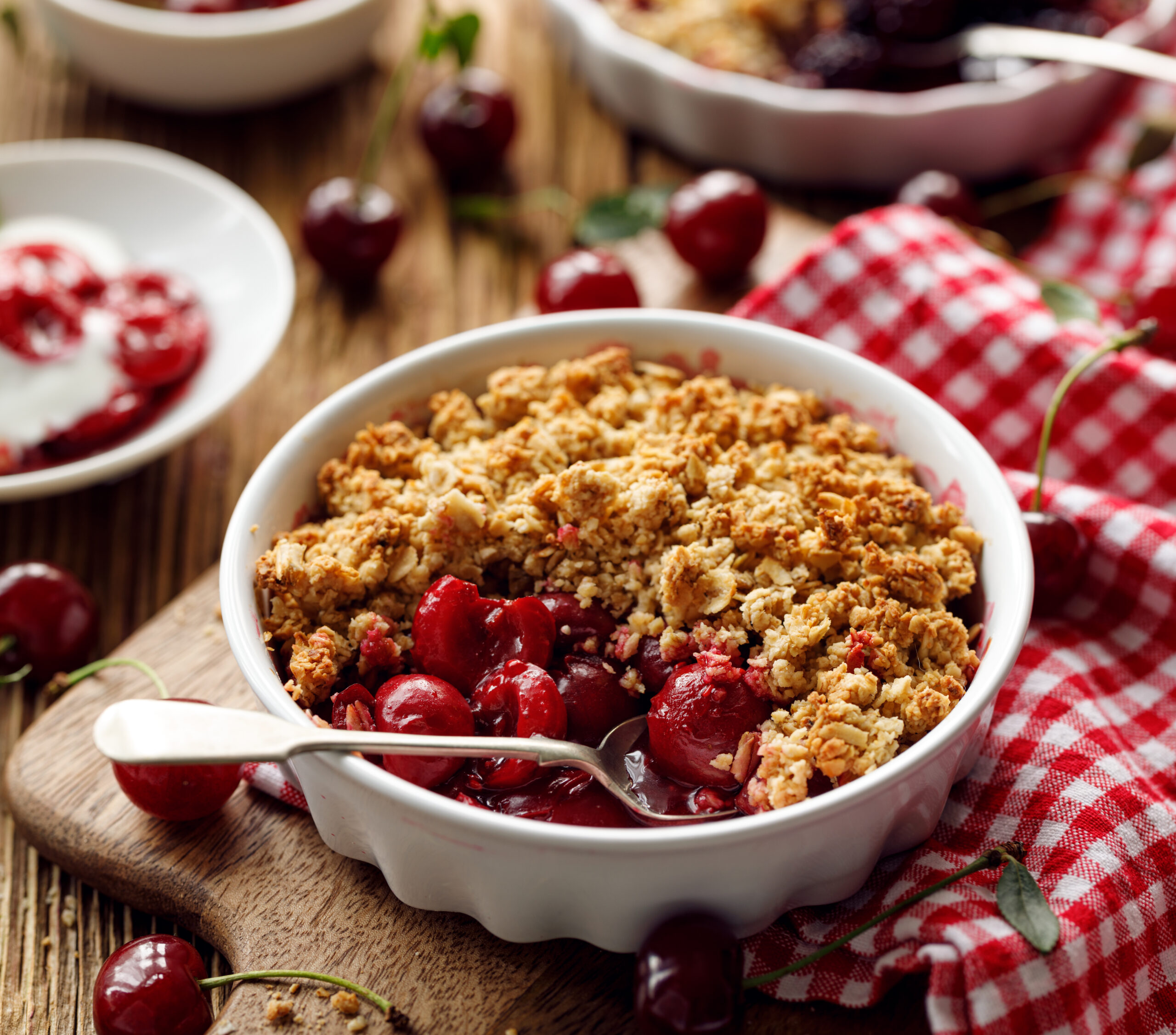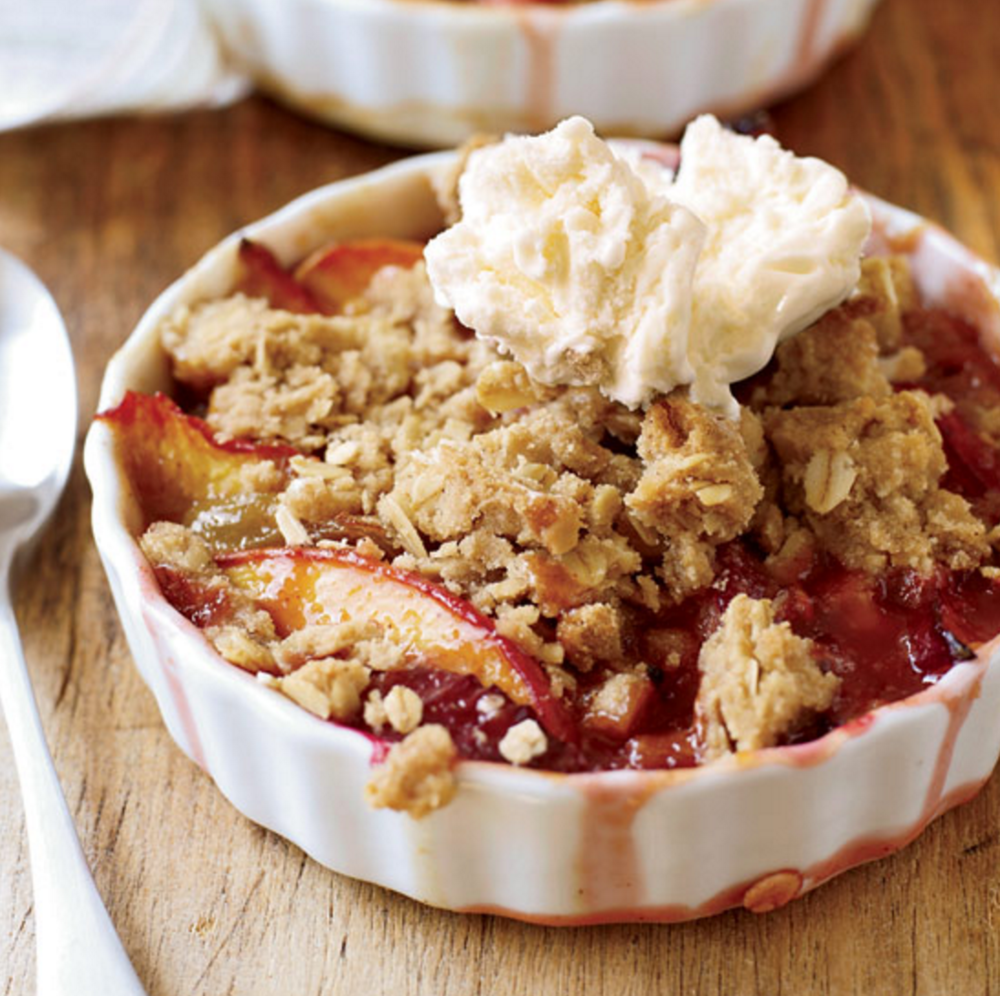

Yummy custard – especially when it’s laced with cardamom and cinnamon. Add to that fresh spring berries (supreme cleansers for the body) as the main attraction—sweetened with just a drizzle of maple syrup and spiked with a splash of vanilla—dessert by no means needs to sabotage your day.
Eastern View: The aromatic seeds called cardamom are filled with soothing, relaxing and antispasmodic essential oils. Cardamom stimulates the digestion and alleviates intestinal spasms and pain, it can also prevent coughing and helps with spring allergies. Cardamom decreases all the doshas and has a cooling but sweet digestive effect.
Cardamom stimulates the agni (digestive fire) without aggravating pitta and also clears excess Kapha from the stomach. Used for nausea, burping and acidity – it’s a great spice to work on any spring sluggishness.
Cinnamon: is used in Ayurveda as a major digestive herb. Just as a bark protects a tree, cinnamon protects and strengthens the intestines. It’s an appetite increaser and has the quality of destroying toxins. It is known as a cardio tonic, reduces Vata and Kapha and in excess can increase Pitta. It’s a strengthening spice that has an effect on digestion, the lungs and circulation.
Useful especially in spring, cinnamon clears mucus from the lungs, and encourages circulation throughout the respiratory system. It can be used to clear ama (digestive toxins) by encouraging sweating. Cinnamon works on a sluggish digestion by increasing digestive fire (agni) and as it also regulates vata, is great for that vata type of gas and bloating. Also useful in pitta type of loose stools and is used as a treatment for candida or thrush.
If Reynaud’s syndrome is your problem, increase the amount of cinnamon you take and it is especially useful in arthritis as its warm, dry and light qualities clear excess ama (toxins) from the joints.
Western View: Cardamom is related to ginger and can be used in much the same way to counteract digestive problems. Use it to combat nausea, acidity, bloating, gas, heartburn, loss of appetite, constipation, and much more. This spice also helps to detoxify by efficiently enhancing the removal of waste products through the kidneys. Part of the reason cardamom is such a good detoxifier is thanks to the diuretic properties. It helps clean out the urinary tract, bladder, and kidneys, removing waste, salt, excess water, toxins, and combating infections too.
Apart from helping with bad breath, cardamom is used for mouth ulcers and infections of the mouth and throat, and this pungent spice may help prevent and relieve cold and flu symptoms. It’s also used for bronchitis and coughs.
Animal studies are showing promise that cardamom protects against, inhibits growth, and even kills some cancers; and as a diuretic and fiber rich spice, cardamom significantly lowers blood pressure.
Many of the vitamins, phytonutrients, and essential oils in cardamom act as antioxidants, cleaning up free radicals and resisting cellular aging. Like ginger and turmeric, its relatives, cardamom has some anti-inflammatory properties that limit pain and swelling, especially in mucus membranes, the mouth, and throat.
Cardamom is an anti-spasmodic that can help get rid of hiccups. This also applies to other involuntary muscle spasms, like stomach and intestinal cramps.
Cinnamon is just loaded with antioxidants and these protect the body from oxidative damage caused by free radicals. In a study that compared the antioxidant activity of 26 spices, cinnamon wound up as the clear winner, even outranking “superfoods” like garlic and oregano (1).
Inflammation in the body is incredibly important. It helps the body fight infections and repair tissue damage. However, inflammation can become a problem when it is chronic (long-term) and directed against the body’s own tissues. Cinnamon may be useful in this regard, because some studies show that the antioxidants in it have potent anti-inflammatory activity (2).
Cinnamon has been linked with reduced risk of heart disease, the world’s most common cause of premature death; and in people with type 2 diabetes, 1 gram of cinnamon per day has beneficial effects on blood markers. It reduces levels of total cholesterol, LDL cholesterol and triglycerides, while HDL cholesterol remains stable (3).
In animal studies, cinnamon has been shown to reduce blood pressure (4). When combined, all these factors may drastically cut the risk of heart disease.
Cinnamon is well known for its blood sugar lowering effects.Apart from the beneficial effects on insulin resistance, cinnamon can lower blood sugar by several other mechanisms. First, cinnamon has been shown to decrease the amount of glucose that enters the bloodstream after a meal. It does this by interfering with numerous digestive enzymes, which slows the breakdown of carbohydrates in the digestive tract (5, 6).
Second, a compound in cinnamon can act on cells by mimicking insulin (7, 8). This greatly improves glucose uptake by cells, although it acts much slower than insulin itself. Numerous human trials have confirmed the anti-diabetic effects of cinnamon, showing that it can lower fasting blood sugar levels by up to 10-29% (9, 10, 11).
Neurodegenerative diseases are characterized by progressive loss of the structure or function of brain cells. Alzheimer’s disease and Parkinson’s disease are two of the most common types. Two compounds found in cinnamon appear to inhibit the buildup of a protein called tau in the brain, which is one of the hallmarks of Alzheimer’s disease (12, 13, 14).
In a study looking at mice with Parkinson’s disease, cinnamon helped to protect neurons, normalize neurotransmitter levels and improve motor function (15).
Ingredients
For The Topping
For The Filling
Directions
Cardamom Custard
Ingredients
Directions
There’s no one size fits all for what you should eat. If you would like to talk with me about what is the right diet for you, sign up for a complimentary consultation. Just click on the link to my online calendar to find a good time that works for you.
In health,


The Holistic HIghway integrates traditional Western medical practices with Ayurveda medicine, creating a focus on prevention through nutrition, diet, and exercise; use of the latest genetic testing and other diagnostic techniques; and prescribed combinations of botanical medicines, supplements, therapeutic diets, detoxification programs, or stress-management techniques.

Integrative Health Expert | Ayurveda Practitioner | Author | Speaker
Kerry is a globally recognized leader in integrative medicine and the science of health known as Ayurveda. She is passionate about raising awareness of the need for a change in contemporary medicine that focuses on patient empowerment and a health-based (rather than disease-based) medical system.
Kerry is connected with The University of Pittsburgh Center for Integrative Medicine and remains a pioneer in the field of integrative medicine where she has developed a personalized system to manage chronic disorders by incorporating fundamental changes in diet, behavior, and stress while focusing on genetics.
This individualized program is so successful that many of her clients have achieved maximum healing and vitality after years of chronic problems!
More to Explore
Contact
Disclaimer
The sole purpose of all the website content is to educate and provide information about Integrative Health, Genetics and Ayurveda.This information is not intended for use in the diagnosis, treatment, cure. or prevention of any disease.
Stay Connected